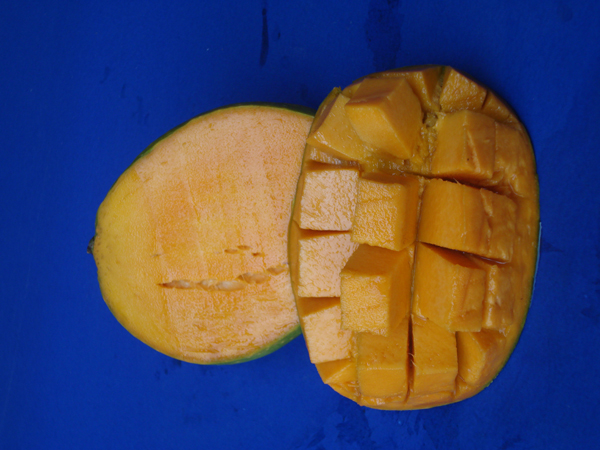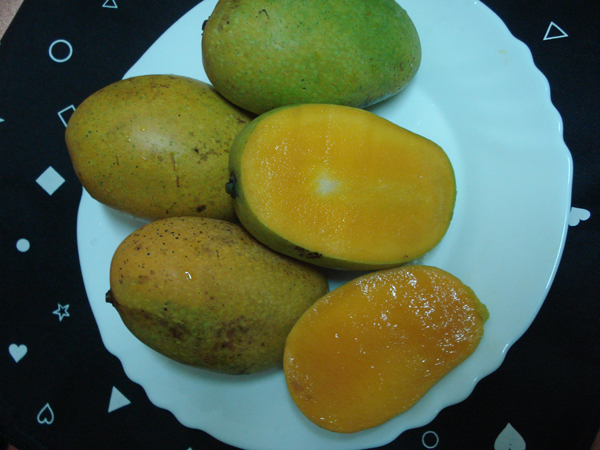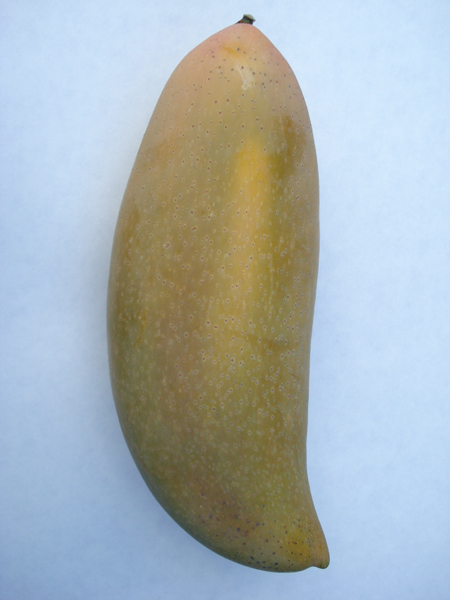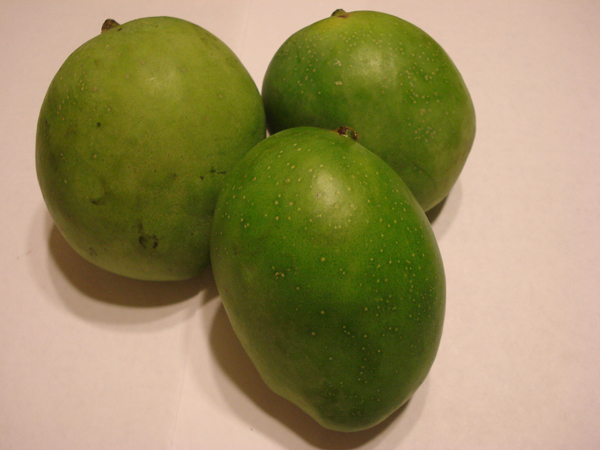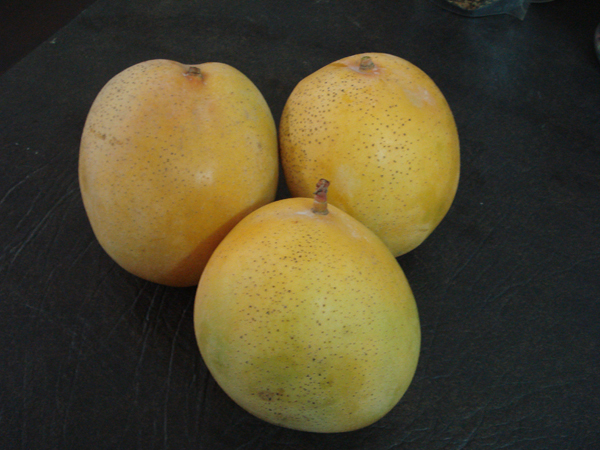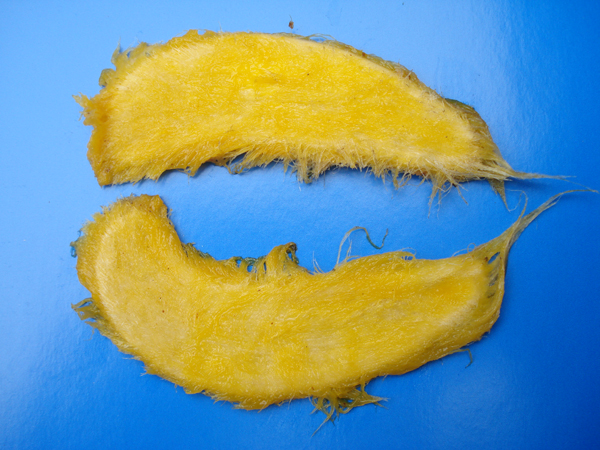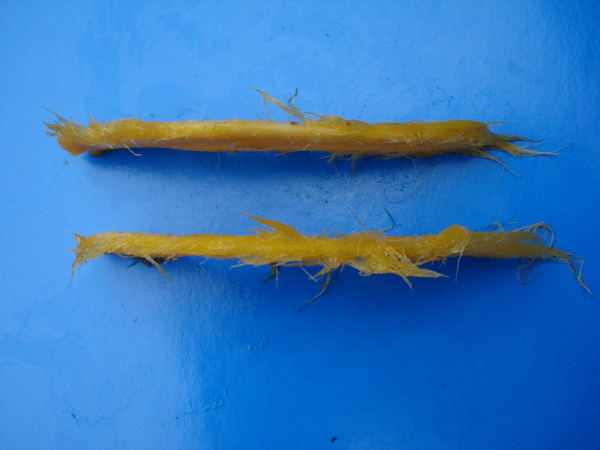
Growth Habit: Mango trees make handsome landscape specimens and shade trees. They are erect and fast growing with sufficient heat, and the canopy can be broad and rounded, or more upright, with a relatively slender crown. It is ultimately a large tree, to 65 ft., but usually half that size in California.
The tree is long-lived with some specimens known to be over 300 years old and still fruiting. In deep soil the taproot descends to a depth of 20 ft, and the profuse, wide-spreading feeder roots also send down many anchor roots which penetrate for several feet.
| Golek (Indonesia) |
Fruits: The fruits grow at the end of a long, stringlike stem (the former panicle), with sometimes two or more fruits to a stem. The fruits are 2 to 9 inches long and may be kidney shaped, ovate or (rarely) round. They range in size from 8 ounces to around 24 ounces. The flower scar at the apex is prominent, in some cultivars bulging from the fruit. The leathery skin is waxy and smooth, and when ripe entirely pale green or yellow marked with red, according to cultivar. Frost Protection: During the first two years, the trees should be given some protection such as an overhead cover during any frost threat. Once the tree is 3 to 4 feet high, overhead protection is difficult but still worthwhile, especially if an unusual cold snap is predicted. Frost damage can also be avoided by erecting an overhead lath shelter, orchard heating, placing lights under the canopy, or using foam or straw trunk wraps. Do not prune dead parts until all frost danger is past. Mangos basically require a frost-free climate. Flowers and small fruit can be killed if temperatures drop below 40¡ãF, even for a short period. |
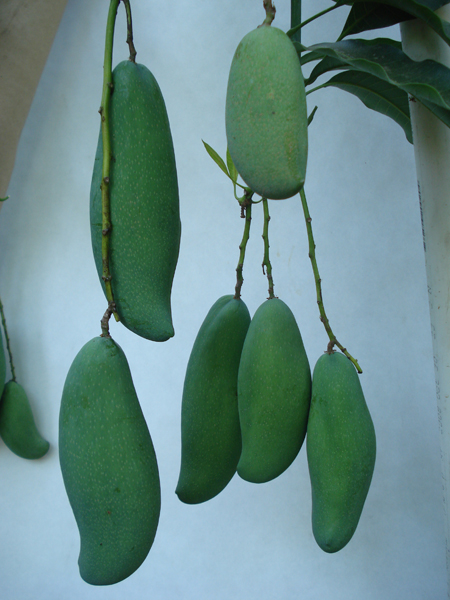
Propagation: These seeds are normally discolored gray. To grow mangos from seed, remove the husk and plant the seed (before it dries out) with the hump at soil level. The seeds normally germinate in two to four weeks, and do best with bottom heat. Multiple polyembryonic seedlings should be carefully separated as soon as they have sprouted so not to loose the cotyledons. Seedling mangos will bloom and bear in three to six years Grafts are most successful if the leaves are allowed to remain below the graft, but remove suckers. Use pencil-sized scions of hard wood with three or four nodes. Cover with loose punctured white paper bag for shade |
